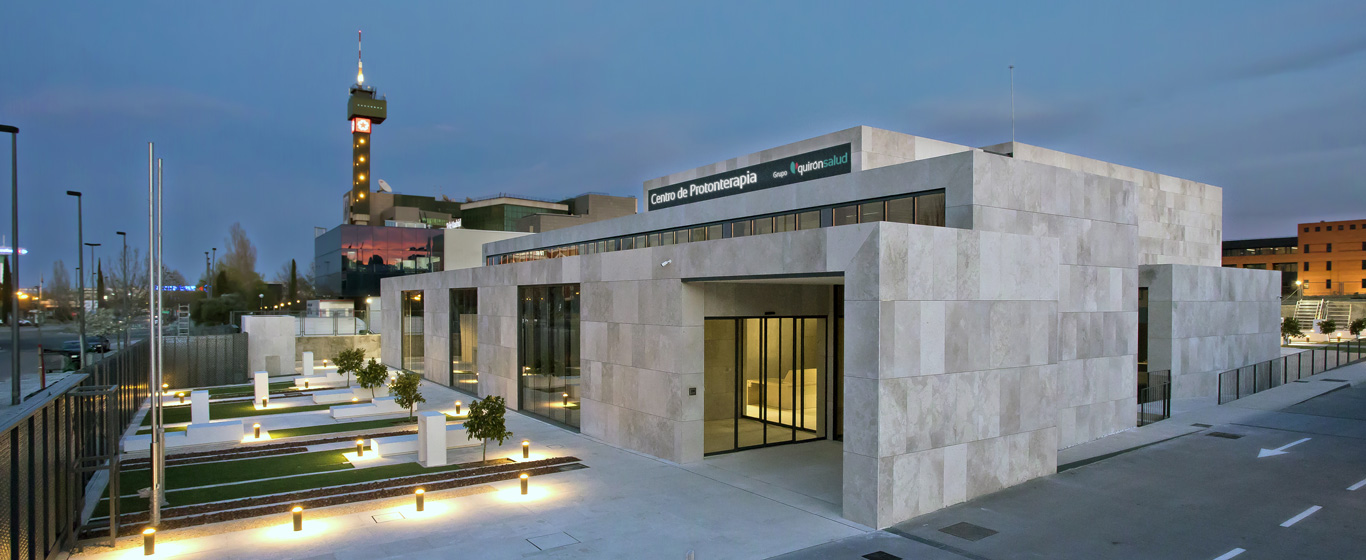Lung Biopsy
A lung biopsy allows for the diagnosis of cancerous tumors, benign cysts, and other lung conditions. To collect the sample for laboratory analysis, different methods can be used, such as a thick-needle aspiration, inserting a probe through the nose, or performing a surgical procedure.

General Description
A lung biopsy is a diagnostic procedure in which a sample of lung tissue is extracted for laboratory analysis to determine the presence of cancerous cells or other lung diseases.
The specialist determines the best method for obtaining this sample depending on the location of the suspicious cells and the patient’s characteristics. The following types of lung biopsy can be performed:
- Needle biopsy: A long, thick needle is inserted through the chest to reach the lung tissue. Typically, an imaging technique (ultrasound, fluoroscopy, or computed tomography) is used to guide the needle.
- Stereotactic biopsy: A type of needle biopsy that uses three-dimensional images from an MRI or a CT scan to assist in the procedure.
- Transbronchial or bronchoscopic biopsy: A bronchoscope, a flexible tube with a light at the end, is inserted through the nose or mouth into the airways to collect a tissue sample.
- Surgical or open biopsy: A small intercostal incision is made to insert the necessary instruments for removing a tissue sample.
- Video-assisted thoracic surgery (VATS): A chest incision is made to introduce a thoracoscope (a thin, lighted endoscope used to view inside the chest) for tissue collection.
When Is It Indicated?
A lung biopsy is performed when previous tests and imaging studies reveal an abnormality in lung tissue that cannot be clearly identified. It is used to diagnose lung cancer, pulmonary fibrosis, sarcoidosis, infections such as severe pneumonia (though this method is rarely used for its diagnosis), benign cysts, and other types of lung diseases.
Each type of biopsy is indicated for different cases:
- Needle biopsy: Recommended when abnormal cells are located near the chest wall.
- Stereotactic biopsy: Commonly used when suspicious masses are not clearly visible in imaging tests and are difficult to access with a needle alone.
- Bronchoscopic biopsy: Used when there is suspicion of a lung infection or when a neoplasm is located in the bronchi. It is a conservative option before considering surgical biopsy.
- Surgical biopsy: Only performed when other procedures are not advisable, when previous biopsy results were inconclusive, or when a larger tissue sample is required.
- VATS: A minimally invasive surgery indicated for studying the lung parenchyma (the tissue responsible for gas exchange) or when a wedge resection is needed.
How Is It Performed?
The procedure varies depending on the type of lung biopsy being performed.
- Needle biopsy: Local anesthesia is used to prevent pain. An imaging technique guides the specialist in inserting the needle through the pre-disinfected skin. After activating the plunger or suction device to collect the required tissue, the needle is removed, and a bandage is applied to the puncture site.
- Stereotactic biopsy: Local anesthesia is administered before inserting the needle through the chest while the patient lies still inside the CT or MRI scanner.
- Transbronchial biopsy: A long, flexible tube (bronchoscope) is inserted through the mouth or nose and guided through the trachea to the bronchi. Once in the target area, instruments pass through the endoscope to extract a tissue sample, after which the probe is carefully removed.
- Open biopsy: As a major surgical procedure, general anesthesia is required, and it is performed in an operating room. A tube is placed in the trachea for breathing support during the procedure. An incision is made between the ribs to insert an endoscope (thoracoscope) that provides images of the lungs. Once the tissue sample is located, the incision is enlarged to introduce instruments for extraction. A chest tube is placed for drainage and lung re-expansion, which is removed after a few days. Stitches are taken out after one or two weeks.
- VATS: This is a less invasive surgery with a quicker recovery. General anesthesia is required, but instead of a large incision, several small (1–2 cm) holes are made in the chest to insert a high-definition camera and specialized instruments for tissue extraction. Once completed, the incisions are closed with stitches.
Once the tissue samples are collected, they are placed in a sterile container and preserved with formaldehyde (CH2O), which prevents decomposition. To avoid oxidation, the container is sealed immediately. In the laboratory, the sample is sliced into thin sections and treated with various substances for easier examination. Once prepared, they are placed on glass slides and observed under a microscope.
Risks
The risks associated with a lung biopsy generally stem from the patient’s health condition and underlying disease rather than the procedure itself, which is considered safe.
Needle, stereotactic, and transbronchial biopsies cause fewer side effects and require less recovery time compared to surgical biopsies.
Some complications that may arise after a lung biopsy include bleeding, infection, pneumothorax, or breathing difficulties. Patients with severe lung disease have a higher risk of mortality from the procedure.
What to Expect from a Lung Biopsy
The patient must wear a hospital gown and sign an informed consent form.
For non-surgical biopsies, the procedure takes place in a sterile room near the laboratory, whereas surgical biopsies are performed in an operating room.
- Needle and stereotactic biopsy: Once the needle is inserted, the patient must remain still, avoiding movement or coughing. The specialist may ask the patient to hold their breath to facilitate tissue extraction. The procedure lasts between 30 and 60 minutes, after which the patient must lie on their side to ensure proper wound closure.
- Bronchoscopic biopsy: Local anesthesia is applied to the mouth or nose, which may have an unpleasant, bitter taste. The procedure lasts between 30 minutes to an hour, during which the patient must keep their mouth open with a tube in their throat. Dryness and swallowing difficulties are common afterward.
- Surgical biopsy: Both open biopsy and VATS require general anesthesia, so the patient wakes up in the recovery room after about an hour. The presence of a chest tube for drainage may be distressing. Pain in the incision area is normal, and analgesics are prescribed. A breathing tube used during the procedure may cause temporary throat dryness and discomfort.
In all cases, a patient is monitored for one to two hours post-procedure and cannot leave the medical center until an X-ray confirms that no lung damage has occurred. Recovery time varies depending on the patient’s condition and biopsy type. Physical exertion is discouraged for several days.
Results are typically available after about a week in a follow-up consultation with the specialist.
Specialties That Request a Lung Biopsy
Both oncologists and pulmonologists use this technique for disease diagnosis. The specialist usually performs the biopsy, though a radiologist may assist. Pathologists analyze the tissue samples in the laboratory and issue the report.
How to prepare
Patients must fast on the day of the procedure, especially if general anesthesia will be used. In such cases, prior tests are necessary to ensure the patient is fit for sedation.
Anticoagulant or anti-inflammatory treatments should be discontinued until the specialist advises otherwise. Additionally, antibiotics are often recommended to reduce the risk of infection during the procedure.
































































































